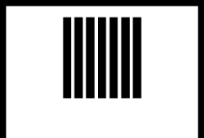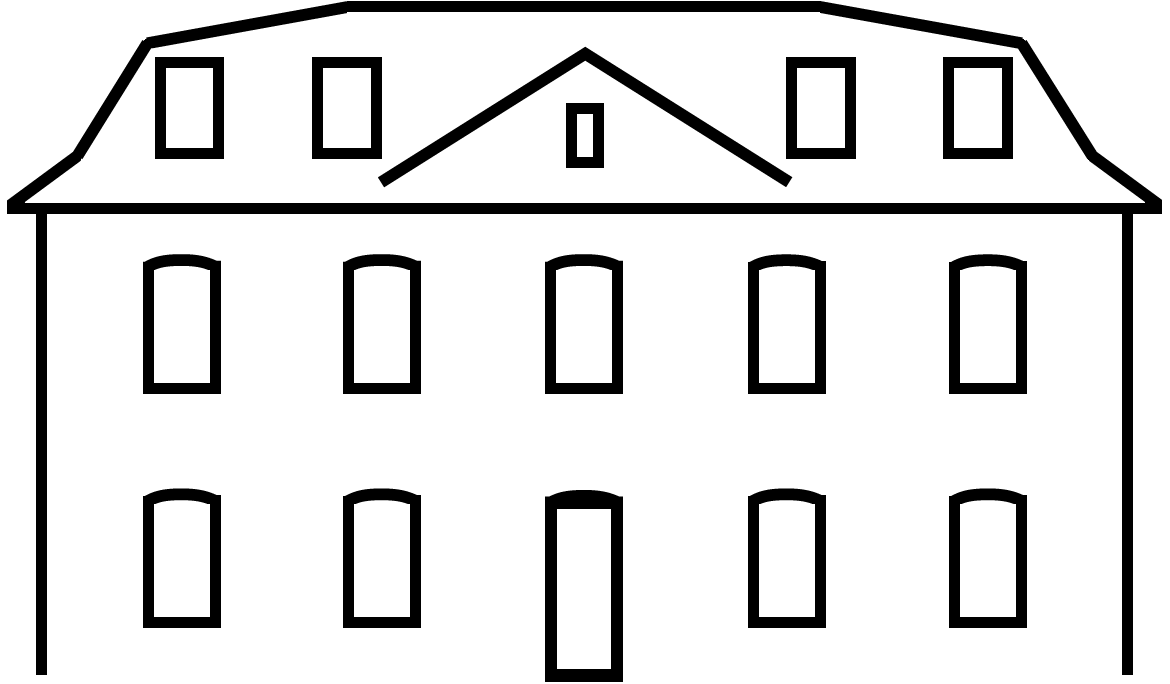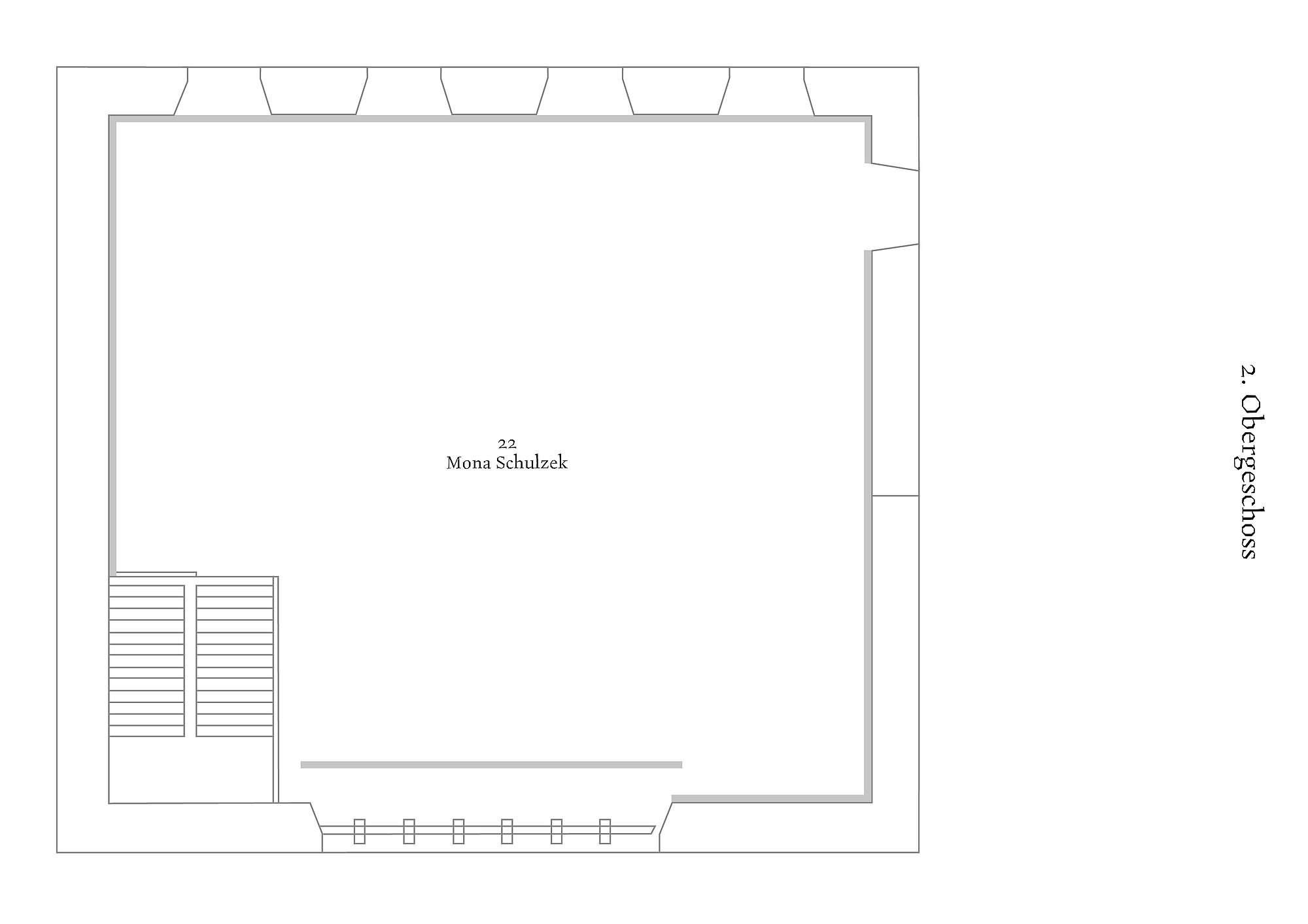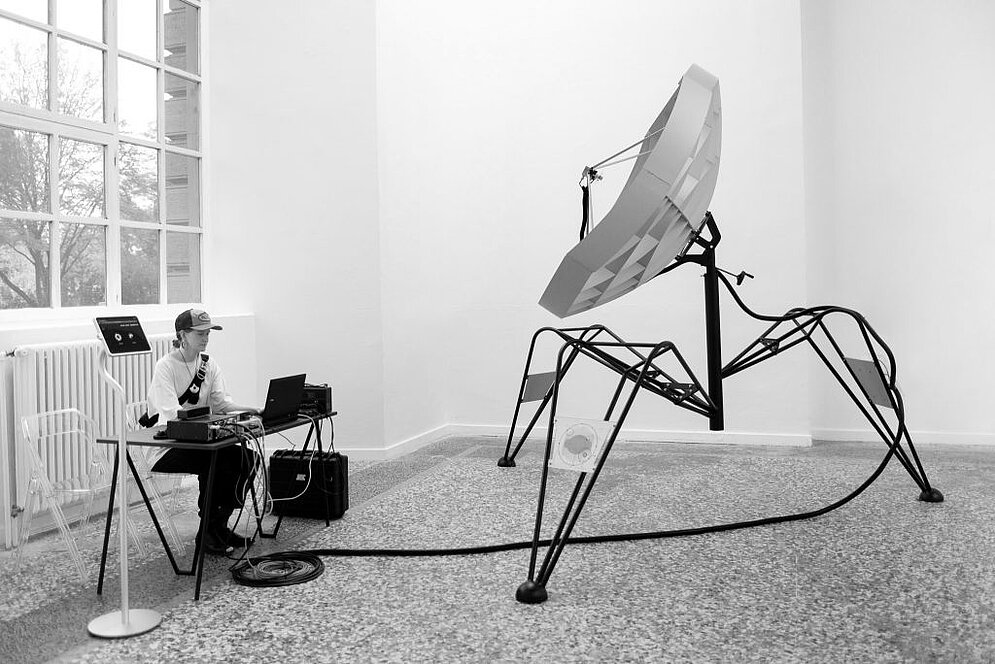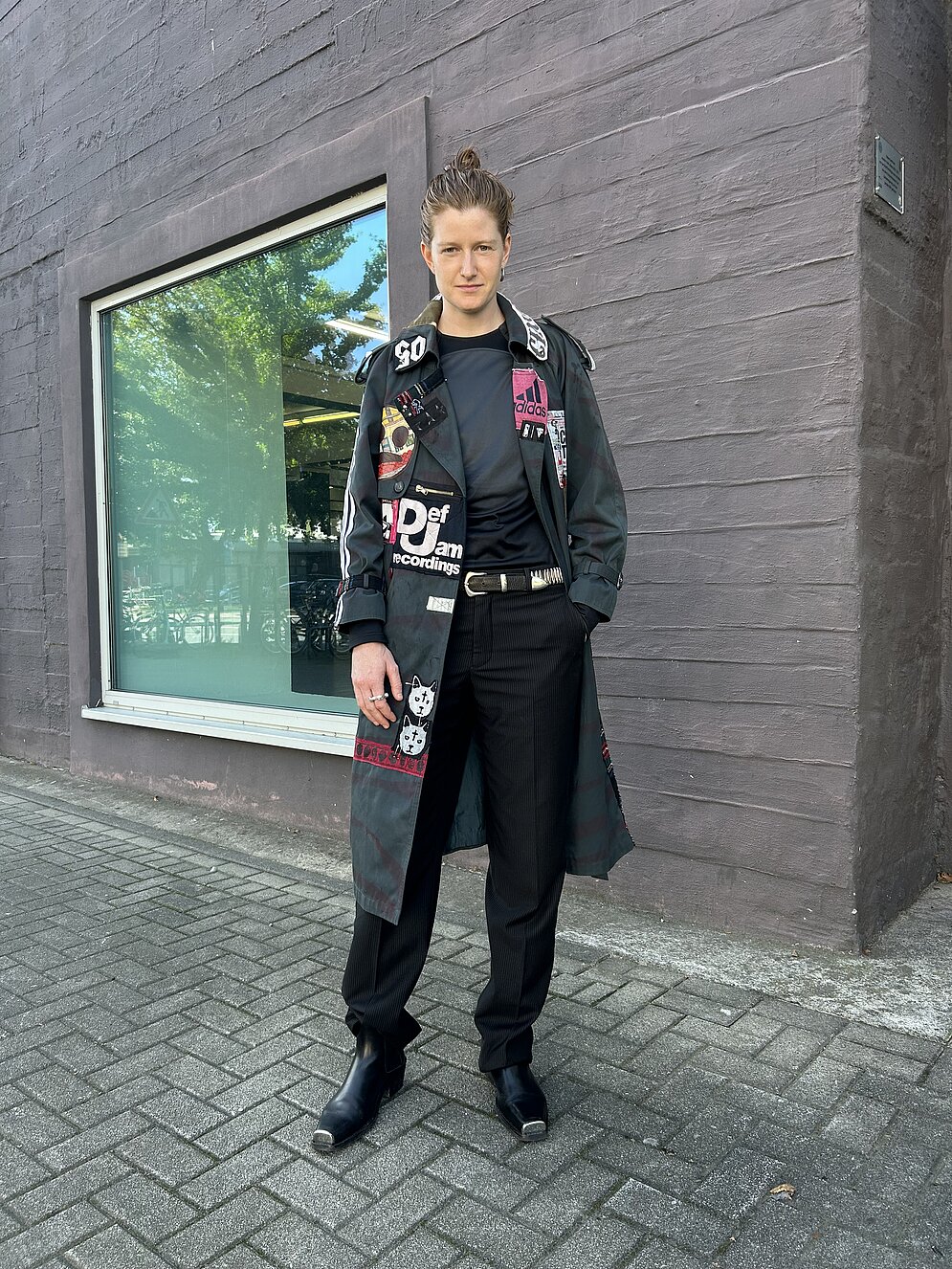22. Mona Schulzek
Outer Space Transmitter, 2021
Atmosphere ≠ Totality, 2023
Spitting off the Edge of the World, 2023
(english below)
Wie bereits 2021 erhält die Preisträgerin das gesamte Obergeschoss der Kunsthalle als Ort für die Einzelpräsentation.
Für die Jury zeigt sich in Mona Schulzeks Werk exemplarisch, was eine bildhauerische Praxis in den Kategorien Plastik, Skulptur, Installation heute leisten kann: zeitgenössische Impulse zu geben für das, was wir als Raum zu begreifen versuchen. Ihre Werke berühren dabei dem Kunstsystem immanente Diskurse, reichen aber darüber in verschiedene Bereiche des Lebens hinaus. In ihren Installationen bedient sie sich verschiedener Medien und Disziplinen, wie der Fotografie oder der Naturwissenschaften. Beispielhaft ist dies in ihrem Outer Space Transmitter seit 2021 zu sehen. Schulzek arbeitet darin mit einem uns umgebenden Raum, der sowohl tatsächlich existiert als auch das Imaginäre anspricht: dem Weltall. Ihre Kunst ist dabei allumfassend, von der Konstruktion eines Senders als skulpturales Objekt, über die Entwicklung eines „extraterrestrischen Alphabets“, bis hin zur Erlangung des zertifizierten Funkscheins. Sie ist damit bemerkenswert konsequent in ihrer bildhauerischen und konzeptuellen Praxis, so die Jury weiter.
Mona Schulzek schloss 2023 ihr Studium an der Kunstakademie Düsseldorf als Meisterschülerin von Gregor Schneider ab. Bereits 2022 wurde sie für ihren Outer Space Transmitter ausgezeichnet und erhielt 2019 das Max Ernst Stipendium. Ihre Arbeiten sind in der Sammlung des Kunstmuseum Bochum und des Max Ernst Museum Brühl vertreten. Einzelausstellungen konnte sie bereits im In- und Ausland realisieren, darunter u.a. Frankreich, Österreich und Spanien.
Der Outer Space Transmitter war bisher eine funktionstüchtige Funkstation, mit Hilfe derer Mona Schulzek Kunst ins All sendet und versucht mit Außerirdischen in Kontakt zu treten. Hierfür machte sie eine zweijährige Ausbildung zur Funkerin, baute eine Parabolantenne und entwickelte ein extraterrestrisches Alphabet. In Recklinghausen zeigt sie den Transmitter ohne die Funktechnik, als „Bild“ des Objekts selbst, gen Fensteröffnung gerichtet. Die Künstlerin versteht Kunst als eine kosmische Sprache, die von Außerirdischen verstanden werden kann. Jede intelligente Lebensform begreift Schulzek auch als kreative Lebensform und gesteht ihnen die Fähigkeit zur Reflexion und Abstraktion zu. Die Sprache der Kunst stellt für sie deshalb den zentralen Schlüssel zur Kommunikation mit Außerirdischen dar.
Die Dioramen Atmosphere ≠ Totality zeigen Vulkangesteine und Meteoriten, die die Künstlerin bei einem Aufenthalt in Island gesammelt und in Planetarien gekauft hat. Für Schulzek stellen Meteoriten und Vulkangestein entropisches Material dar. Entropie beschreibt den Prozess des Zerfalls, der jede Materie in den Zustand der Unordnung bringt.
Am allumfassendsten ist die Installation Spitting off the Edge of the World. Mit einer Frequenz von 16 Herz, senden Orgelpfeifen permanent Wellen in den Raum aus. Eine langwellige Frequenz, die das menschliche Ohr gerade noch hören kann, die aber vor allem durch Resonanz und Schwingung des eigenen Körpers wahrgenommen wird. Wie eine Decke legt sich der Klang über den Raum, trifft wellenartig auf Wände, wird zurück und umhergeworfen und verdichtet sich in den Ecken der Etage. In der Orgelmusik als Demutston bekannt, stellt Mona Schulzek hier ganz im Sinne der Eröffnungsszene von Stanley Kubricks „Space Odysee 2001“ bildliche und akustische Fragen, die sich um die großen Zusammenhänge von Menschen, Welt und Universum drehen.
/
As in 2021, the prizewinner will receive the entire upper floor of the Kunsthalle as a venue for her solo presentation.
For the jury, Mona Schulzek's work exemplifies what a sculptural practice in the categories of plastic, sculpture and installation can achieve today: to provide contemporary impulses for what we try to understand as space. Her works touch on discourses immanent to the art system, but reaches beyond this into various areas of life. In her installations, she makes use of various media and disciplines, such as photography and the natural sciences. An example of this can be seen in her Outer Space Transmitter since 2021. In it, Schulzek works with a space surrounding us that both actually exists and addresses the imaginary: outer space. Her art is all-encompassing, from the construction of a transmitter as a sculptural object, to the development of an "extraterrestrial alphabet", to obtaining a certified radio license. She is thus remarkably consistent in her sculptural and conceptual practice, the jury continued.
Mona Schulzek completed her studies at the Düsseldorf Art Academy in 2023 as a master student of Gregor Schneider. She received an award for her Outer Space Transmitter in 2022 and was awarded the Max Ernst Scholarship in 2019. Her works are represented in the collection of the Kunstmuseum Bochum and the Max Ernst Museum Brühl. She has already had solo exhibitions in Germany and abroad, including France, Austria and Spain.
The Outer Space Transmitter was previously a functioning radio station with the help of which Mona Schulzek sends art into space and attempts to make contact with extraterrestrials. To this end, she trained for two years as a radio operator, built a parabolic antenna and developed an extraterrestrial alphabet. In Recklinghausen, she is showing the transmitter without the radio technology, as an "image" of the object itself, directed towards the window opening. The artist sees art as a cosmic language that can be understood by extraterrestrials. Schulzek also understands every intelligent life form as a creative life form and grants them the ability to reflect and abstract. For her, the language of art therefore represents the central key to communication with extraterrestrials.
The dioramas Atmosphere ≠ Totality show volcanic rocks and meteorites that the artist collected during a stay in Iceland and bought in planetariums. For Schulzek, meteorites and volcanic rocks represent entropic material. Entropy describes the process of decay that brings all matter into a state of disorder.
The most all-encompassing is the installation Spitting off the Edge of the World. With a frequency of 16 hearts, organ pipes permanently emit waves into the room. A long-wave frequency that the human ear can just about hear, but which is primarily perceived through the resonance and vibration of one's own body. The sound covers the room like a blanket, hits the walls like waves, is thrown back and around and condenses in the corners of the floor. Known in organ music as the humble tone, Mona Schulzek poses visual and acoustic questions here in the spirit of the opening scene of Stanley Kubrick's "Space Odyssey 2001", which revolve around the great connections between people, the world and the universe.
Besucherinfo
| Di-So und an Feiertagen | 11 bis 18 Uhr |
| Heiligabend und Silvester | 11 bis 14 Uhr |
| Montag | Geschlossen |
| Normal | 5 € |
| Ermäßigt* | 2,50 € |
| Kinder unter 14 Jahren | frei |
| Samstags | Pay-what-you-want |
| Führungen auf Anfrage |
Die Kosten für eine gebuchte Führung betragen 55,- Euro pro Gruppe (max. 20 Personen). Anmeldung unter Telefon (02361) 50 19 35.
| Kunsthalle Recklinghausen |
| Große-Perdekamp-Straße 25–27 |
| 45657 Recklinghausen |
| Telefon: +49(0)2361-50-1935 |
| Telefax: +49(0)2361-50-1932 |
| E-Mail: info@kunst-re.de |
